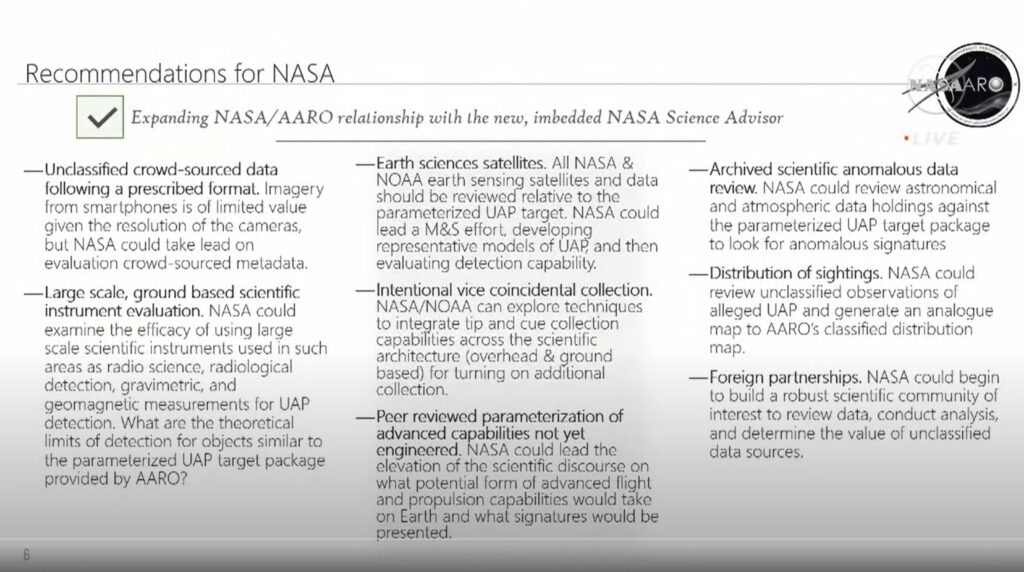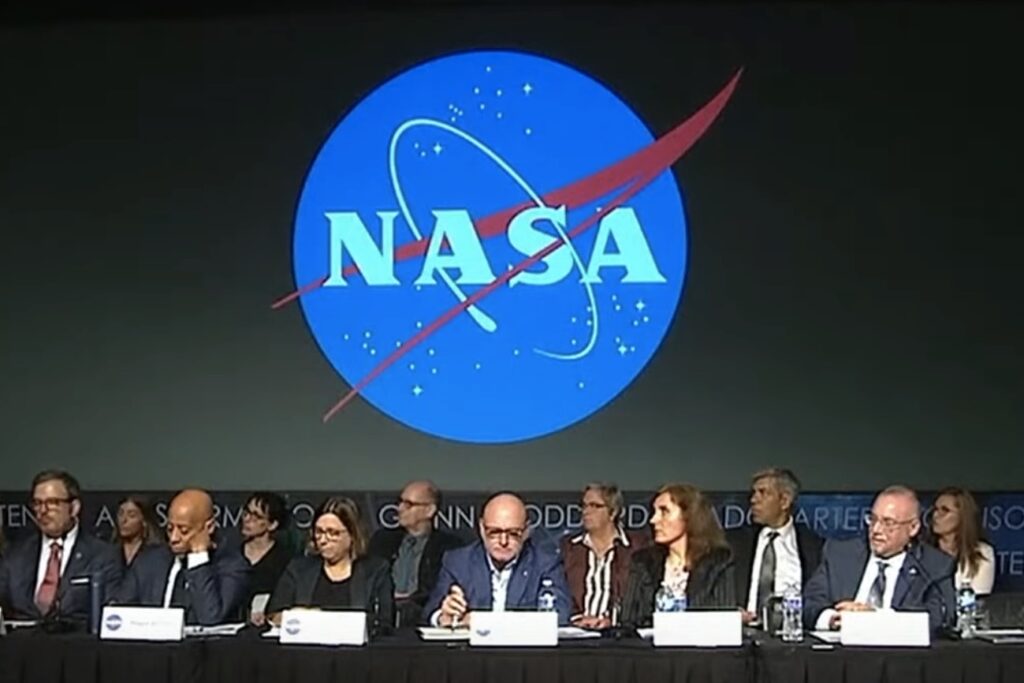One of the more interesting ideas discussed during NASA’s UAP task force panel on May 31 involved the idea of crowdsourcing UAP research. It appears this is just a nascent idea without a firm foundation at the moment, but it opens up some intriguing possibilities down the road. One of the ideas discussed was finding a way to coordinate phone data so multiple people could know to point their phones at the same phenomenon at the same time.
NASA’s Task Force Is Considering Encouraging People to Point Their Phones at a Phenomenon Simultaneously
NASA’s independent UAP task force, composed of 16 people, was formed in June 2022, Space.com reported. The May 31 meeting was focused on informing the public about what the task force is currently doing. Much of the meeting seemed to be brainstorming how NASA’s task force could exist alongside AARO, which is the lead in UAP data collection. NASA’s task force doesn’t appear to have access to all of AARO’s data, according to statements made during the meeting, so NASA may be looking into collecting more unclassified data of its own.
One of the first presenters was Dr. Sean Kirkpatrick, AARO director. He presented a few recommendations for how NASA’s team could work alongside AARO (including embedding a NASA member onto AARO’s team.) One of his suggestions, presented in a slide shown below, involved NASA leading the charge in crowdsourcing data.

His slide suggested that NASA could play a role in “unclassified crowd-sourced data following a prescribed format,” further noting: “Imagery from smartphones of limited value given the resolution of the cameras, but NASA could take lead on evaluation crowd-sourced metadata.”
Some task force experts seemed more excited about the idea.
Federica Bianco, joint professor with the University of Delaware, was a big proponent of crowdsourcing data collection.
Next: Federica Bianco #NASAUAP #NASA #UFO #UAP pic.twitter.com/ptnXbm84A2
— Post Apocalyptic (@PostApocalypt) May 31, 2023
She said that to make a crowdsourcing platform a reality, they would need a way to coordinate the community’s efforts. Ideally, they’d have a platform for collecting data (such as from cellphones), and be able to tell the community to point their sensors in a direction of a specific sighting as it happened.
Another Expert Wants to Incentivize the Public to Collect Data
Karlin Toner, senior advisor, data policy integration for the FAA, is also fully on board with crowdsourcing data collection. She wants NASA to find a way to incentivize the public to participate in crowdsourcing UAP data.
She wants NASA to help incentivize reporting and look into crowdsourcing data, along with sponsoring UAP conferences. The team has just heard one firsthand UAP account and only a few UAP images so far . Did I hear that right?
— Post Apocalyptic (@PostApocalypt) May 31, 2023
But it appears that there’s still a long way to go before this is reality. Right now, they’re just throwing out crowdsourcing ideas. So I wouldn’t hold your breath about seeing this any time in the very near future.
In fact, much of the panel discussion seemed to hinge on why NASA has an important role to play in the UAP investigation, but they still need to figure out exactly what that role is going to be.
Most UAPs will be explainable and some will be national security issues. AARO is prime source for understanding these, so they must determine what NASA’s role is in light of AARO’. It can help remove stigma, provide data standards, and involve more scientists #NASA #UFO #UAP pic.twitter.com/1J1k0LX766
— Post Apocalyptic (@PostApocalypt) May 31, 2023
David Spergel suggested NASA could work to remove stigmas involved with reporting UAPs, provide standards for data collection, and involve more scientists in analyzing data.
But just how much data does NASA have access to?
AARO is tasked with researching UAP sightings, including all surveillance taken by any classified sources. Kirkpatrick noted during the meeting that out of more than 800 sightings being investigated by AARO, 2 to 5% of them are anomalous and not easily explained. However, Spergel said later in a media conference that the NASA task force had not been investigating those 800 sightings. It appears the NASA task force hasn’t seen the anomalous sightings that Kirkpatrick had referenced.
And Toner made a statement during her presentation that seemed to indicate they haven’t seen much yet at all.
She wants NASA to help incentivize reporting and look into crowdsourcing data, along with sponsoring UAP conferences. The team has just heard one firsthand UAP account and only a few UAP images so far . Did I hear that right?
— Post Apocalyptic (@PostApocalypt) May 31, 2023
So… While some members of NASA’s task force really emphasized that there is no evidence of extraterrestrial life yet from what they’ve seen, it’s not clear just how much they’ve actually seen at this point. What is clear, however, is that many members of the task force are really interested in learning more. Hopefully the crowdsourcing idea will come to fruition and help us take another step forward in gathering more data for analysis.
This work by Stephanie Dwilson is licensed under CC BY-ND 4.0. Please note that this license does not include photos or videos that may be in the story.


Leave a Reply